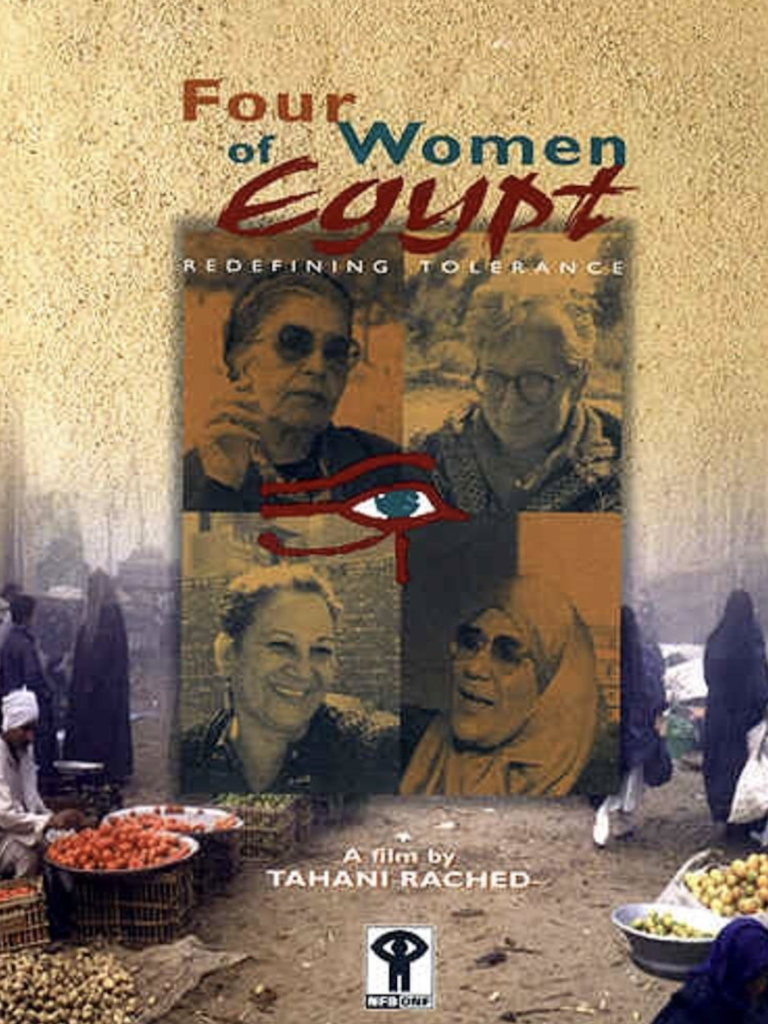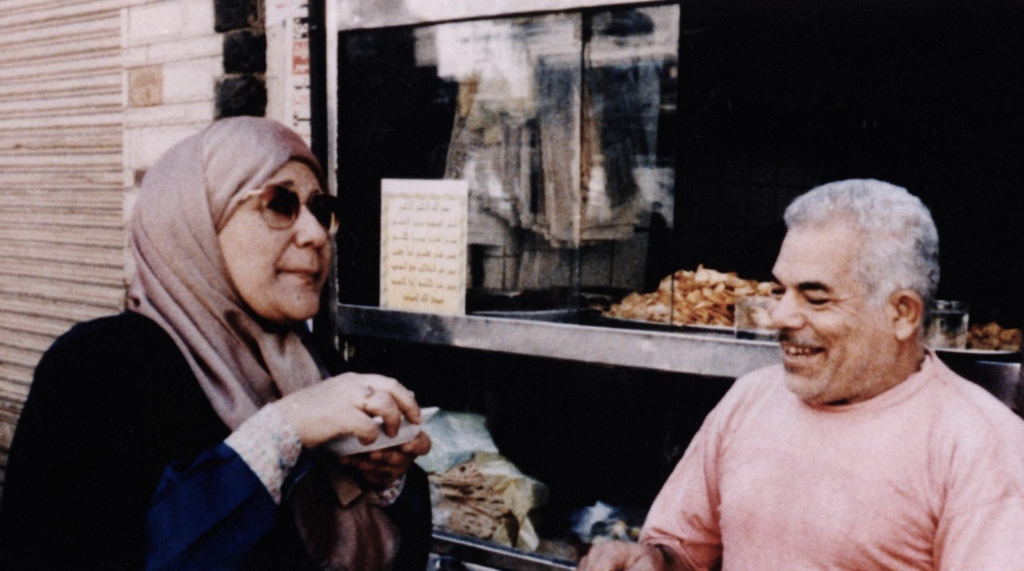Movie Review of 'Four Women of Egypt'

By: Adam Abdel-Qader / Arab America Contributing Writer
The Four Women of Egypt is a film that depicts a true story of the unbreakable bond that four women from Egypt share because of their Arab heritage and Egyptian nationality. The film vividly represents many first-hand perspectives on Egypt’s history, politics, and culture.
This movie about four everlasting friends is commendable as it is a highly praised film and an award-winning picture in documentary film festivals. Although political, social, and religious views differ vastly amongst the group, they cherish their shared roots, reflect on their unique culture, and embrace empowerment as a part of their shared “human values.”
Background and Accomplishments:
For reference, the background and accomplishments of the friend group are an excellent start to understanding the movie’s origin.
Safinaz Kazem:
Safinaz Kazem is a woman of profound excellence. She dedicated her life to being an accomplished journalist, theatre critic, and writer with numerous books. During the 1960s, she pursued a graduate degree in Chicago, New York, and Kansas. Notably, she was formerly married to the Egyptian poet Ahmed Fouad Negm and had a daughter named Nawara Negm, now a prominent Egyptian political activist and journalist.
Shahenda Maklad:
Shahenda Maklad was a spirited personality and figure in student and nationalist movements in Egypt and even ran as a nominee in parliament campaigns. She dedicated herself to championing the rights of peasants and other populist causes. In a tragic moment during her life, her husband Hussein Salah was assassinated on April 30, 1966, in Kamshish, Egypt. Despite this adversity, she continuously worked towards her causes until her passing in June 2016 due to cancer.
Wedad Mitry:
Having dedicated her life to journalism, Wedad Mitry was a student activist who became the only woman elected to the Student Union at Cairo University in 1951. Within the same year, she became an active Women’s Popular Resistance Committee member.
Amina Rachid:
Amina Rachid, a dedicated leftist, was born into the upper class as the granddaughter of Ismail Sidki, a well-known former prime minister of Egypt. She pursued her studies in Paris, where she actively participated in the Arab Student Association and worked at the French National Centre for Scientific Research. While her political beliefs are substantial, they motivated her to return to Egypt and teach French and literature at Cairo University. She passed in August 2019.

A Relevant History of Egypt:
Britain officially gave Egypt its independence in February of 1922. Although, at the time, Egyptians thought their nation had formally become a sovereign state and was no longer a part of the British Empire, they were mistaken. In many ways, Egypt remained under the direct influence of British rule, especially in matters such as defense and foreign affairs. Only in the 1950s, when soon-to-be President Gamal Abdel Nasser staged the Free Officers’ Revolution and unseated the British-led Wafd Party, was when Egypt felt its true liberation. This moment was the moment that genuinely ended British colonialism in Egypt. Nasser even stepped forward and nationalized the Suez Canal, permanently expelling Britain from Egypt. Citizens rallied behind his sense of action and leadership, believing he led them toward greater independence and self-determination.
Growing up in Nasser’s nationalist sentiments evoked a great sense of pride within these up-and-coming activists in their developing years. As the movie progresses, viewers witness the friend group’s progressive and nationalist rhetoric. They also debate whether Nasser left a good mark on Egypt. It is evident throughout the film that Shahenda, considered the strongest embracer of the nationalist perspective, values Nasser and his subsequent ambitions for the future to this day. At the same time, although the rest of the women were not as adamant about defending Nasser’s time in power, their feelings of abandonment and loss when thinking about Nasser’s funeral in 1970 are highly evident.
After Nasser’s passing, Muhammad Anwar Sadat took office and set out to move Egypt away from Arab socialism and the nationalist movement. As Sadat shifted the country away from socialism, the four women remained unchanged and continued to utilize the ideals of social and civil justice apparent within Nasser’s ideology. Shahenda, Amina, and Wedad pushed forward with their idea of a secular government, while Safinaz’s idea of social justice revolved around a more Islamic embrace. Their push for progression led to their arrests as President Sadat imprisoned nationalist thinkers by the hundreds.
All in all, aside from ideology and specific arguments they may have throughout the movie, Safinaz states in the film that the relationship between the four women is so strong because they are” ‘united by the same human values,” and although her values come from her” ‘commitment to Islam,'” and theirs “‘spring from their way of thinking,'” they all believe that they are interconnected with the same “human values” and same”‘ struggles.'” Ultimately, they share virtues regarding their Arab heritage, freedom of speech, and freedom of religious and political expression.
Bigger Meanings:
Within a film about a group of friends lies a true story about unbreakable cultural and historical bonds influenced by revolutions and years of political evolvement in Egypt. Although these women have different viewpoints on how Egypt’s politics should continue to pan out, the underlying meaning of the movie holds a much larger sentiment.
Four Women of Egypt portrays these women in a way that genuinely challenges the stereotypes and misconceptions about Arab women. Subsequently, it provides a nuanced representation of women’s experiences and perspectives throughout Egypt’s history.
The film raises awareness about the necessity for greater gender equality and social justice in Egypt and the Arab world during Nasser, Sadat, and even after. The movie depicts the four best friends as strong, resilient, and determined women when faced with adversity, ultimately challenging the frequent and detrimental stereotype of Arab women as passive victims. The film reveals how women have been at the forefront of political, civil, and social change in Egypt throughout its history and how women’s struggles have contributed to an even broader effort for human rights and the development of democracy.
Conclusion:
Moreover, the film stresses the diversity of Arab society, and it challenges a notable sentiment of a monolithic “Arab culture.” By giving these four women a platform and a unified voice, the film illuminates the richness and overall diversity of Arab culture while challenging the damaging misconceptions and harmful stereotypes often bolstered in media.
Check out Arab America’s blog here!








